ONE question, probably very simple but I am just starting out (and encountering so many difficulties!)
I want to study the degree distribution of several of my networks. I use degree.distribution and get results. But when I want to graph them with the plot function there is a problem. Isolated vertices do not seem to be represented.
> degree.distribution(net.rel_non_lucra)
[1] 0.45454545 0.13636364 0.09090909 0.13636364 0.04545455 0.09090909 0.04545455
When I read the results in the console the first number indicates that 45% of the vertices are isolated. This is the case in the data table and in the graph. But when I plot the distribution (and compare it with other networks) the 0.45 are associated with a degree 1.
Do I have to modify the steps and the axes etics myself? If yes how ? Or is there an error somewhere else?
Here data about the network :
E(net.rel_non_lucra)
- 18/18 edges from e732712 (vertex names): 1 N --M N --T N --B N --E N --JL PR--P M --T M --B M --E M --JL J --C [12] J --B J --S A --C C --B C --S B --E B --S
22/22 vertices, named, from e732712: 1 N AN PR JB L M LS J BT V L. LC T A C P G B E S AL JL
here the visualization of the graph with the isolated vertices..



